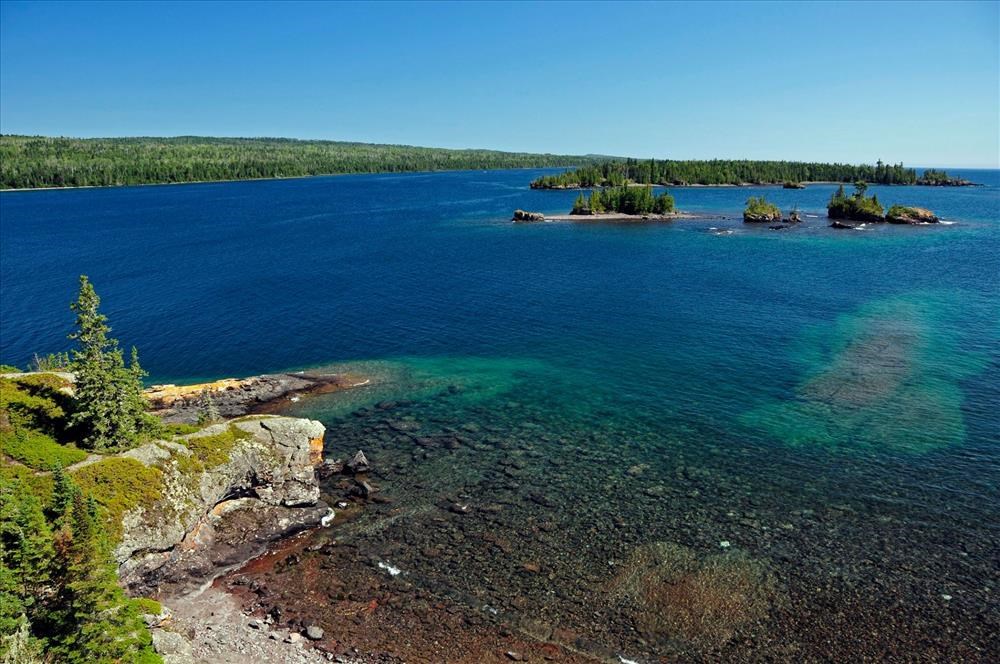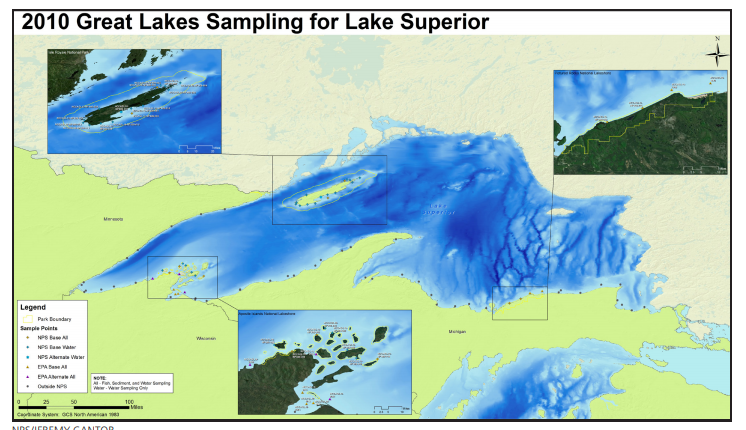Part of a series of articles titled Crystal Clear: A Call to Action.
Article
Crystal Clear: Assessing Coastal Water Quality in the Great Lakes with the U.S. Environmental Protection Agency

NPS Photo
Background
Water quality issues do not begin or end at the boundaries of our Great Lakes national parks. In 2010 the NPS, in partnership with the US Environmental Protection Agency (US EPA), evaluated Great Lakes water quality with national assessment criteria and compared water quality inside and outside park boundaries. US EPA created a study design with 30 sites within park boundaries in both Lake Superior and Lake Michigan. With funds from the Great Lakes Restoration Initiative, NPS joined with US EPA’s National Coastal Condition Assessment to systematically survey coastal waters in the Great Lakes parks. Overall, US EPA sampled 115 sites in Lake Superior and 137 sites in Lake Michigan. The results will give the NPS a clearer understanding of water and sediment quality in national parks, identify coastal management issues, and provide an important lakewide context for understanding park conditions.Status
Samples were collected in five national parks in Lake Superior and Lake Michigan during the National Coastal Condition Assessment for water chemistry, sediment chemistry and toxicity, and benthic macroinvertebrate communities: water.epa.gov/type/watersheds/ monitoring/aquaticsurvey_index.cfm Data analyses are expected to be completed by November 2013. Preliminary analyses show some interesting results. For example, in Lake Superior, the levels of some nutrients in the waters around the remote Isle Royale National Park are surprisingly similar to levels in Lake Superior’s most industrialized harbor. In general though, water quality in national park units in Lake Superior is similar to the greater lake. Likewise, the water quality of national parks in Lake Michigan is similar to the greater lake. Using US EPA assessment criteria for water quality, all waters within the boundaries of national parks in the Great Lakes are ranked as “good” (highest quality). Mercury levels in fish tissues and sediments from samples inside national park boundaries are well below US EPA guidelines. Results from analyses of sediment and fish samples for pesticides and persistent toxic chemicals are forthcoming. The effects of environmental stressors on sediment macroinvertebrate communities are being examined with benthic indices and risk assessment approaches. Implications for future monitoring efforts are being discussed in the context of the survey results.
Last updated: November 6, 2018
